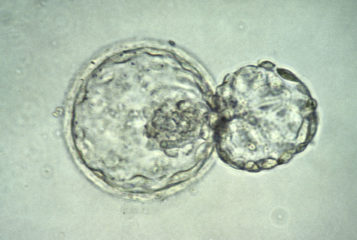The news last week that Robert Lanza's team at Advanced Cell Technology (ACT) had developed a compromise way of creating embryonic stem cells (ES cells) from human embryo, without killing them, brought a temporary cease-fire to the battle surrounding this contentious area of stem cell research.
The international media was excited. The Times of London awarded the story front page and an enthusiastic leader comment, concluding that 'scientists have found a way of answering many of the ethical objections to this research'. It also opined that President Bush, who recently vetoed federal funding of ES cell research, may now have 'the flexibility he needs to change his mind'.
Bush change his mind? I think not. The theory of blastomere extraction from living embryos was widely debated by his Council on Bioethics and deemed 'ethically unacceptable' in a White Paper of May 2005 (1). Whatever the White House position, serious doubts are now circulating as to whether the experiment performed by ACT has in fact any relationship whatsoever to their actual claims.
Trumping all considerations is the unequivocal fact that not one of the 16 embryos involved in the research actually survived, not surprising considering they were exposed to multiple (4-7 cells) biopsy and not single cell as promised. For this reason alone the pro-life lobby rejects the proposal, while raising grave concerns about the eugenic nature of PGD which is part of the Lanza protocol, as well as the physical risks associated with this technology. And they point out that even if the embryos were to survive biopsy, it is unlikely that they would all be accommodated in a welcoming womb.
With 91 cells involved in the ACT research, and all embryos killed, the derivation of two stem cells lines hardly comprises efficiency. And as the two stem cell lines were cultured in the close company of other cells, serious questions are now being raised about the true nature of their derivation. Nature, who reported the news online, should certainly be encouraged to reassess the illustrations provided for the article. A picture of single cell biopsy and another of an embryo survivor hardly reflect the reality of the ACT experiment.
Those in favour of research on the human embryo have also expressed concern about risks attached to PGD. And they worry at how little is known about the uniformity of the single cells of the blastomere embryo. It is already recognised that these early cells are not absolutely identical, which makes the derivation of healthy stem cells potentially haphazard. When low efficiency is added, it is not surprising that scientists working in similar fields remain unconvinced.
In the United Kingdom the experts were particularly unenthusiastic. Key players such as Professor Braude, Dr Lovell-Badge, Dr Minger and others, judged the new proposal inefficient and unnecessary, and reiterated serious concerns about the safety of PGD. They will continue using existing spare embryos or creating state of the art ones with high quality eggs and sperm, as permitted under UK law.
So the Lanza protocol has been greeted with thumbs down from the opponents of embryo research, and almost insuperable scepticism from the other side. ACT stocks had an initial surge while the media hyped the story, but even that economic reaction is showing reversal as the true facts come to light. This research has not solved anybody's problems, the Presidential veto is unlikely to change, and the cease-fire in the embryonic stem cell battle is over.





Leave a Reply
You must be logged in to post a comment.